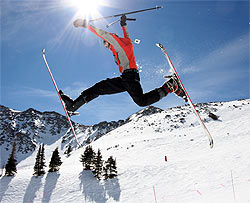force rule
Question
Thanks again for your help on my earlier question of tagging a forced runner who never left the bag.
I fully understand the rule now, but I question why it was designed so because it appears to give an added advantage to the defense in relieving them of the obligation to execute the force at the lead runners forced base. Just to recap, mine was the question about the lead runner being tagged while still on his original base before the fielder subsequently stepped on the same base completing the double play.
The infield fly rule is designed, I believe, to remove unfair fielder choice situations that could allow exploitation of base runners. If I am correct in that statement, why do you suppose this rule is so written.
From a historical perspective, have any rules been changed from the original design after much controversy over fairness?
Answer
Bernard: You are correct about the infield fly rule and the reasoning behind it. I am not sure why the force rule is written as it is.
I don't know if any of the rule changes enacted over the years were due to controversy over fairness. It is possible.
I'm not sure it is necessarily an added advantage for the defense, if the offense knows the workings of the rule and works them to their advantage.
In the 1960 World Series, Yankees vs. Pirates, game 7 showcased one of the great running plays in Series history.
The Yankees had Mickey Mantle on first base and Gil McDougald on third, when Yogi Berra hit a hard ground ball to Pirate's first baseman, Rockey Nelson.
Since Nelson felt he could not get McDougald at home and also felt he wasn't in a good position to turn the 3-6-3 double play, he stepped on first base, retiring Berra. In so doing, Mantle was no longer forced to go to second. He wisely slid back into first and was called safe, rather than keep running into the tag at second.
That reaction from a base runner is seldom seen. It is a play which makes sense, as that will require two throws for them to record the out, or create a rundown where most anything can happen.
The Cardinals and Astros, in April 2005, had a similar situation to the one you asked about.
Astros had the bases loaded, no outs, Craig Biggio hit a hard ground ball to Scott Rolen at 3B, who stepped on third base to erase the runner from second, then threw to first to double up Biggio. After Biggio was called out, Pujols tagged Willie Taveras, the runner on first base, who was standing on the bag.
For whatever reason, Taveras had never attempted to go to second base. The first base umpire apparently became confused and called Taveras out after Pujols applied the tag. It appeared the Cardinals had executed a triple play. Taveras stayed on the bag, confident he was not out.
After the umpires conferenced, it was decided Taveras was not out because he was no longer forced to go to second base, once Biggio had been retired.
If Puljols had tagged Taveras ( on the bag or not ), before he touched first to put Biggio out, it would have been a triple play.
When it was all figured out, the Cardinals had recorded two outs; but the Astros had scored a run.
If the Cardinals had pulled off the triple play, with the batter/runner Biggio making the third out of the inning, the Astros would not have scored a run, since the batter/runner made the third out at first base.
Baseball is a great game. Mr. Chadwick had it pretty well figured out in 1868, when he wrote:
"The theory of baseball is as simple as that of any field sport in vogue, and herein lies one of its attractive features; and yet, to play the game up to its highest point of excellence requires as great a degree of mental ability卆s any known game of ball." (from THE GAME OF BASEBALL By Henry Chadwick, 1868)
And it is still true today!
Yours in baseball,
Rick
Scoring in Baseball
force out/runner tag out


